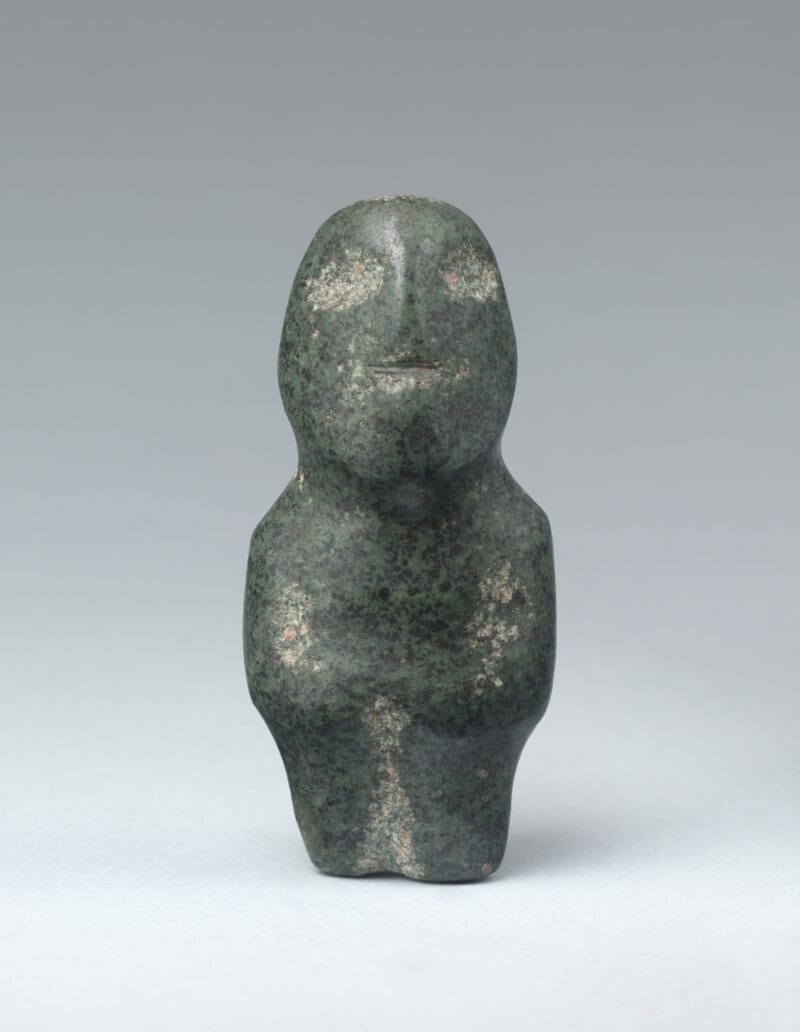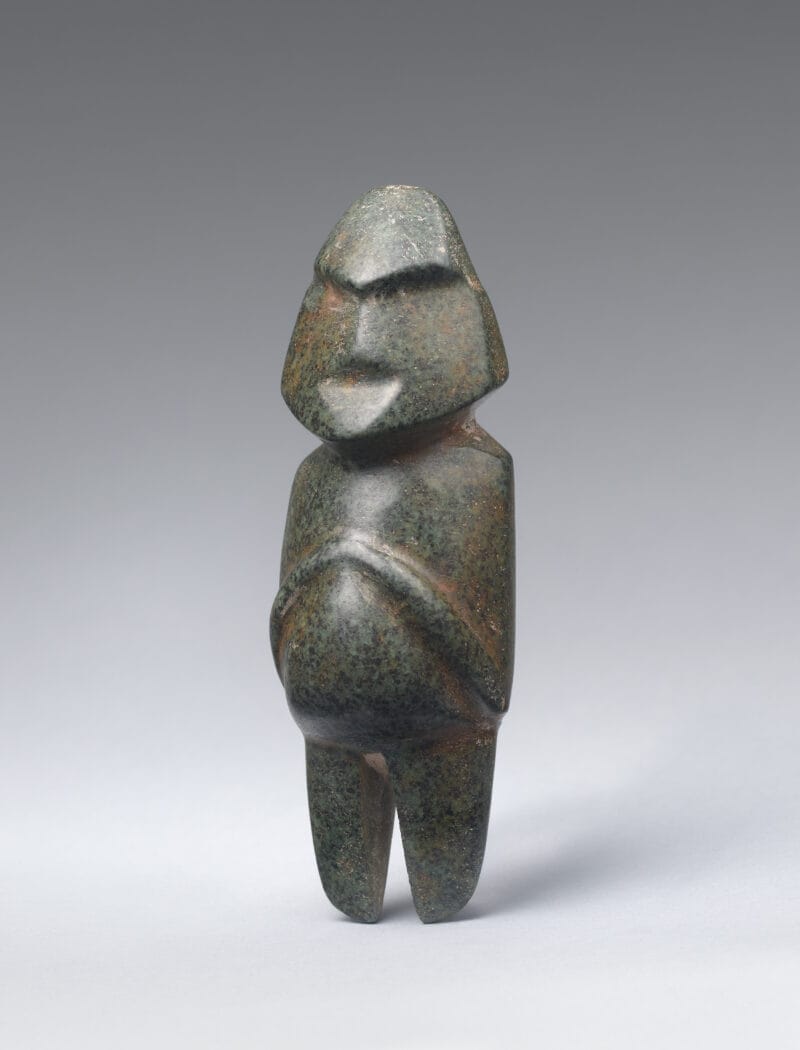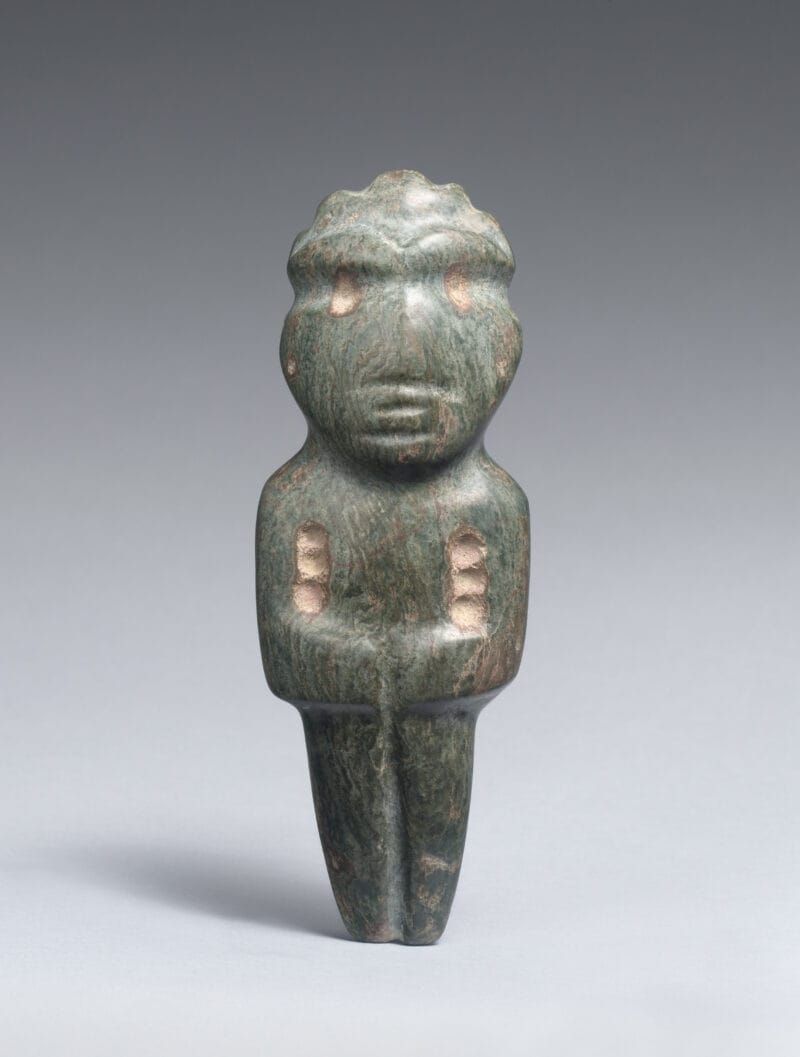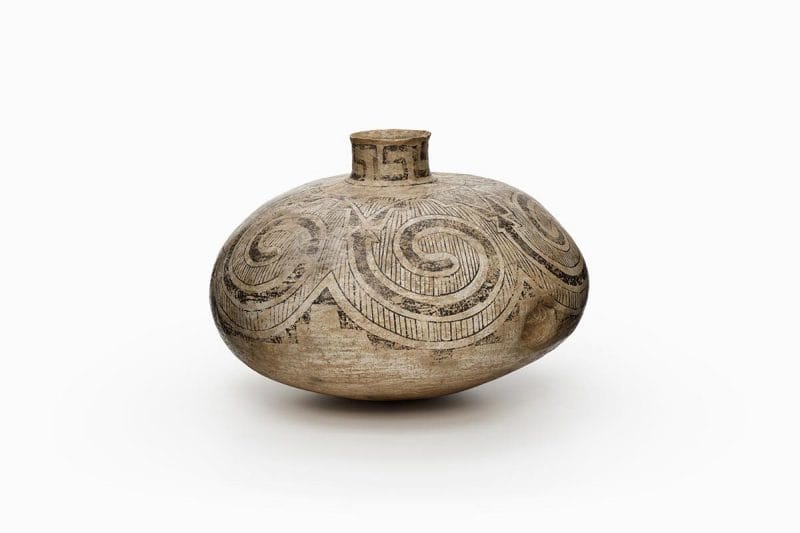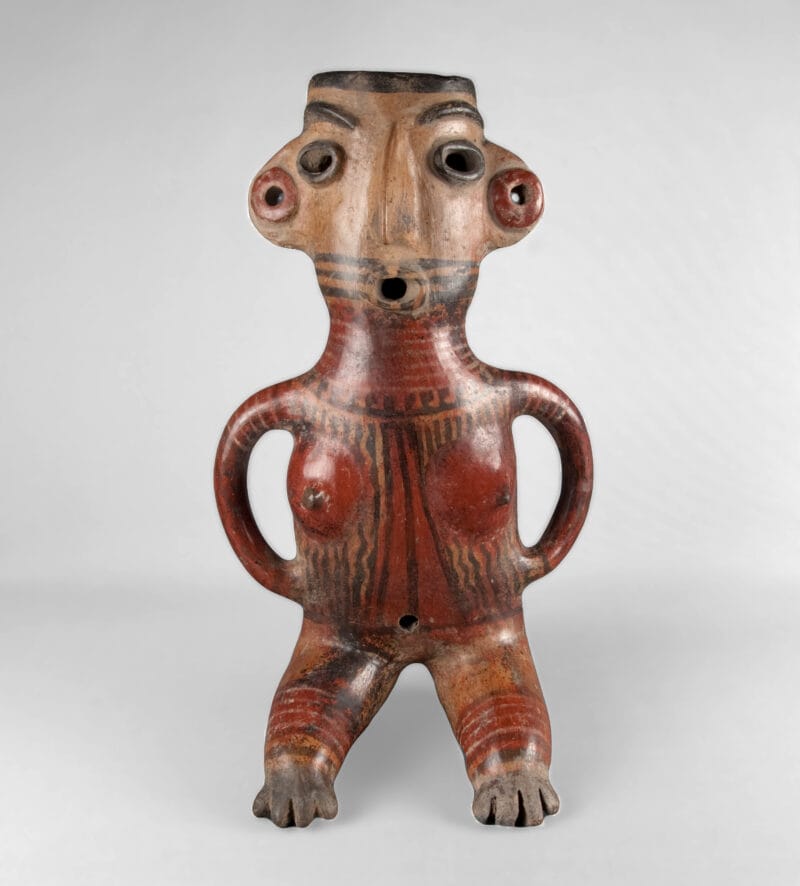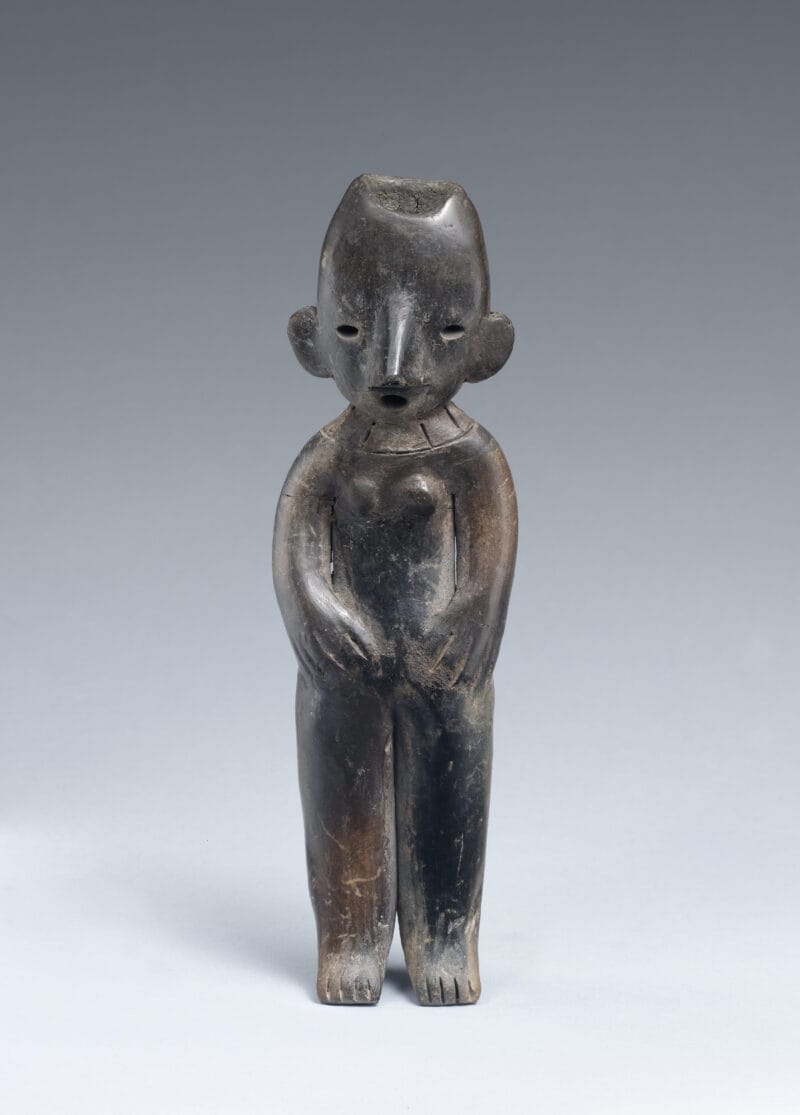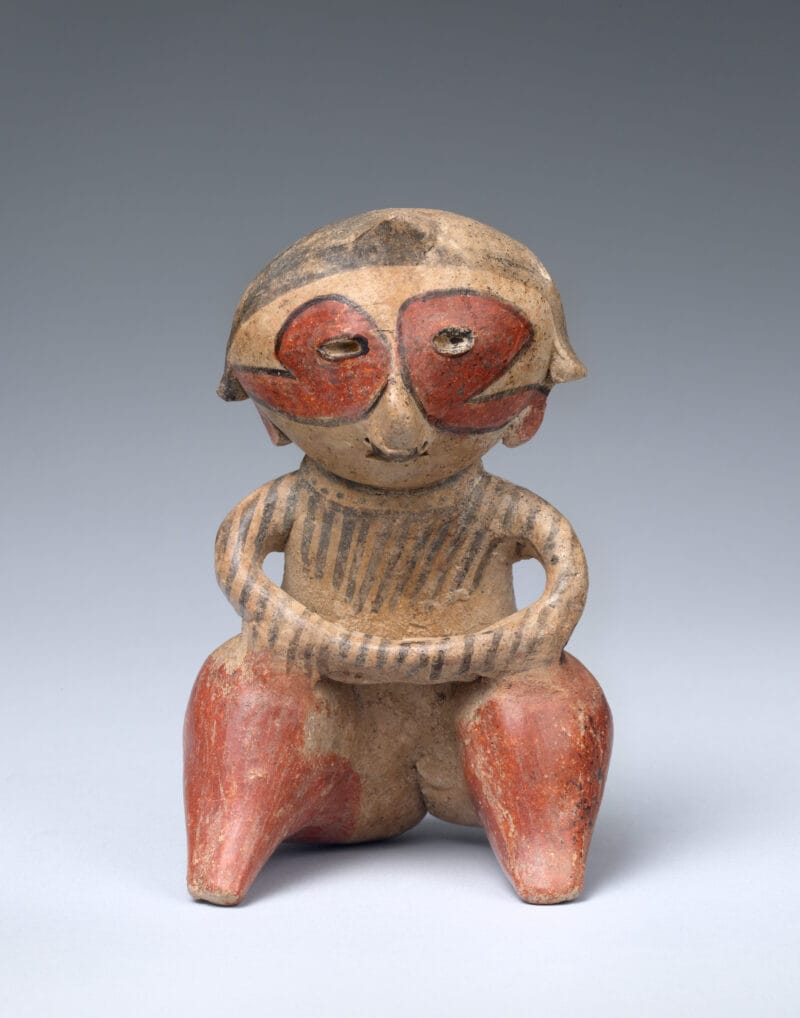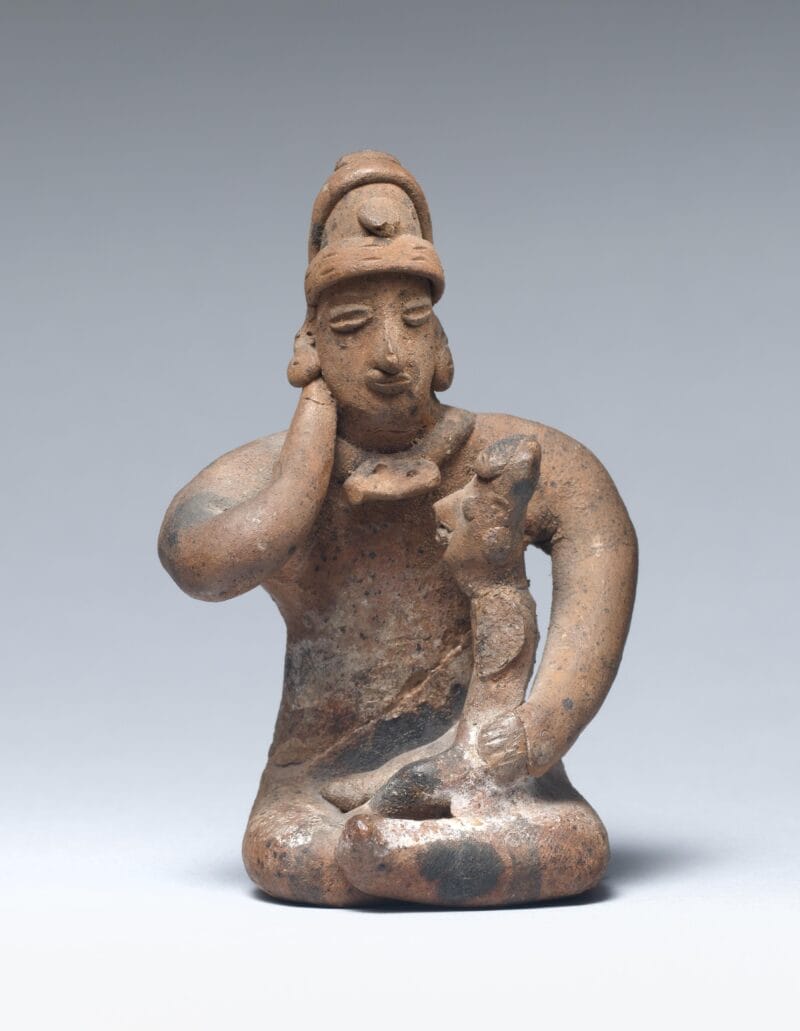

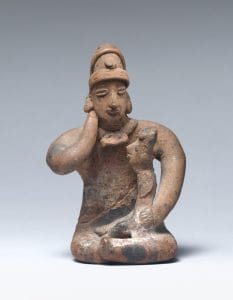
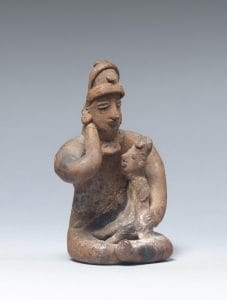
About the Object
The seated figure and infant seen here, fashioned from clay, both feature headdresses. The adult has expressive facial features such as eyes that look forward, along with the right arm raised toward the figure’s face, a belt clasped on the figure’s waist, and a protective left arm that embraces the infant. This may have been a more general motif or associated with a particular family or ritual practice.
Additional Information
The Mexican state of Jalisco is located on the Western-Pacific region of Mexico. This region was a flourishing center of Mesoamerican traditions whose legacy in ceramic sculpture shows superior stylistic and technical expertise in working with clay. These clay figurines display a high level of naturalistic human expression. Found in shaft tombs from the Late Formative to Middle Classic Periods, Jalisco clay figurines were likely made and dedicated to mortuary rituals connected with renewing life and agricultural cycles. Their varied positions and handheld objects seem to further suggest that they were fashioned to serve the departed in the afterlife.
Dr. Alvin Friedman-Kien Collection;
Gift to The Jan T. and Marica Vilcek Collection, 2009-2010;
Gift to The Vilcek Foundation, 2010;
Related Objects
You may also be interested in
Graywolf Press

Juan Pablo Contreras composes classical music with the sounds of Mexico
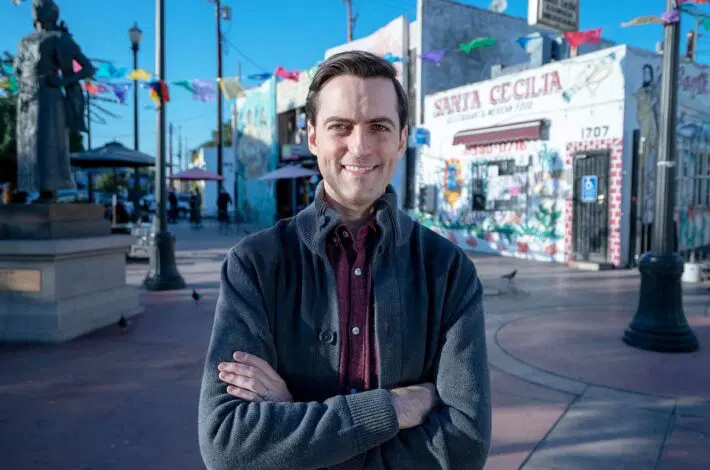
Felipe Baeza


